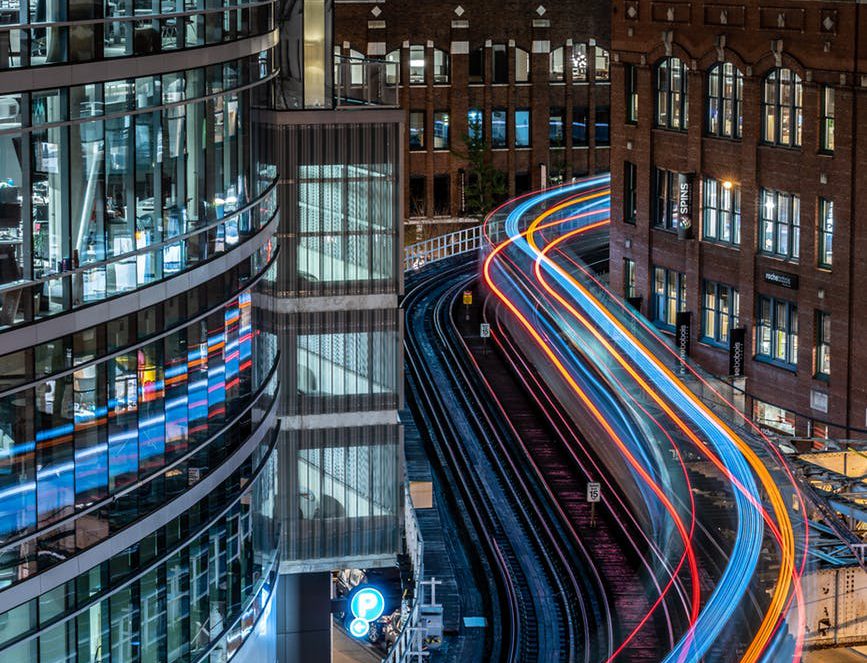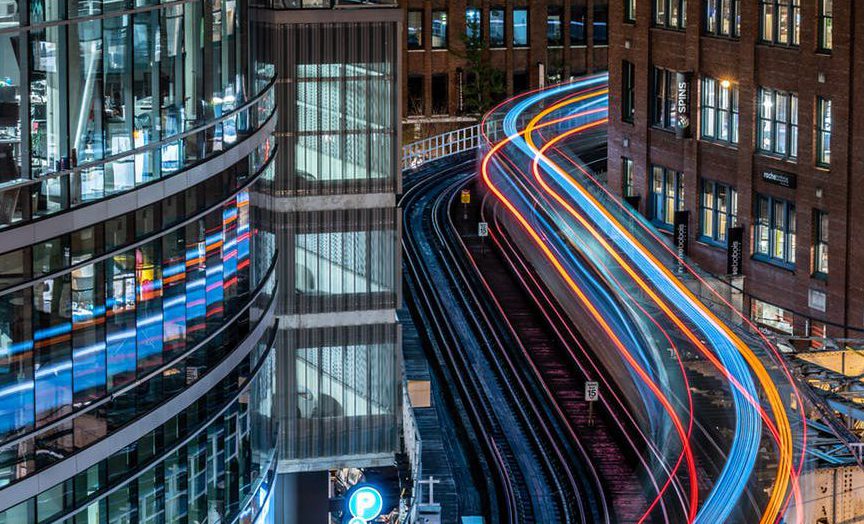Interoperability in the Mobility Industry: Challenges and Opportunities
Since the dawn of “smart” technology, innovators and engineers have been channeling efforts into making urban areas more livable with hyper-efficient components. From smartphones to smart homes, we’re at the cusp of the next frontier ‑ smart cities. The framework of smart cities relies mainly on seamless data exchange and mobility. This can only be achieved through IoT (Internet of Things) and open data. Crucial to this idea is interoperability amongst mobility systems, which allows them to work in tandem and ‘talk’ to each other. Let’s find out the challenges & opportunities of Interoperability in the Mobility Industry.

To create truly smart cities with efficient mobility systems, interoperability has to be fully implemented.
Interoperability in the Mobility Industry– Enabling Smart Cities
Interoperability refers to different systems exchanging data to work together seamlessly. To make this happen, weather stations, infrastructure companies, transport companies, parking companies, etc. Must all work together to integrate devices and create a single platform where machines work in tandem.
At its core, interoperability in the mobility industry like transportation and parking, the two tenets of mobility, mainly works through wireless sensors, gateways, repeaters, cameras, the cloud, and so forth. When these are integrated into IoT devices like vehicles, cameras, home appliances, actuators, charging stations, and even on doors, roadways, footpaths, etc., they all work together, constantly exchanging and storing massive data to create and learn patterns. Then, these patterns are stored in the cloud. Be it reaching your office, getting a parking spot, ordering groceries, testing food to see if it’s safe, the devices will use pre-saved data to work together and make citizens’ lives easier.
This further helps in averting hindrances as well as learning patterns. For example – if your vehicle takes a route daily and remembers the usual duration, it can optimize to decrease the duration for a smooth journey by predicting traffic jams, stoppages, road obstacles, etc. To make this happen, the vehicle must constantly exchange data with the roads, nearby streets, pavements, etc. That is what interoperability is all about.
Today, inoperability is still at its nascent stage, as we still operate on outdated, single-purpose Machine to Machine(M2M) solutions that only cater to niche requirements.
What Happens When Systems Work in Silos?
The most pertinent mobility problems that cities face today as a result of systems working in silos are traffic, pollution, lack of organized parking, etc. Since IoT hasn’t launched full-fledged, cities still rely on single-application, M2M platforms, such as traditional fleet management, car telematics, utility metering, transport, and so on. All this leads to siloed operating, where the whole city runs on inefficiencies, and the concept of data exchange remains defeated. The best solution to this is interoperability, which brings forth newer opportunities to solve these problems in their entirety.
Importance of Interoperability in the Mobility Industry– Newer Opportunities
Interoperability unlocks a whole new wave of opportunities that are flooded in with the creation of a smart city.
Tesla’s trend of EVs (Electrical Vehicle) has already begun the transformation from quintessential single platform usage to interoperability. A smart city relies on e-mobility, and interoperability holds the key to unlock its full potential that roads are cleaner, traffic jams are a thing of the past, cars do more than just travel, and the whole framework of roads become more efficient. As EVs pave the way for higher sustainable mobility, interoperability connects them with their surroundings for faster travel, maintaining road safety, and even the vehicle’s security itself. When EVs exchanges data with their surroundings, It avoids accidents, optimize routes, notify the riders about any safety protocol they’ve breached, and even about foreseeable harm, such as theft.
According to USA Today, travelers spend 17 hours on average per year just to look for parking spots. This treasure hunt costs them approximately $345 in wasted fuel emissions and time. With the already fearful problems in the economy, this is one that must not pile on to our worries. Interoperability is the perfect solution here, as it brings on the concept of smart parking. With IoT-operated parking, sensors can track the cars and monitor parking occupancy. This is extremely helpful for parking area owners to maintain daily commutes and overcome parking hindrances easily, with the constant feed of available parking spaces. Moreover, this will also help motorists save time as they circle for parking spots since the constant data feed will show them the available slots in real-time.
Read Also: EV Charging Stations in India to Become a Reality Soon?
Challenges to Interoperability in the Mobility Industry
Interoperability is a viable solution to most of the problems we face today, economically, environmentally, and physically. However, there are several hindrances to its implementation today, like:
- While the plans of IoT implementation in parking are quite big, the actual execution might still take some time. Our world still runs on 4G networks currently, which isn’t powerful enough to support IoT at such a massive scale. Secondly, we exist in the predominant 19th Century infrastructure, which is incapable of meeting the requirements of a smart city.
- The biggest challenge of interoperability is interoperability itself. Since IoT is still not a norm, integrating various systems to work together is still an unachievable task. IoT devices and platforms come from various manufacturers and vendors, and thus, have different approaches to data exchange. The networks they rely on exist in various locations, with different transmission technologies. For interoperability to exist, all devices and platforms must coexist in one single platform, which is impossible as of now.
- The “smart city” technology relies on modern frameworks, with integrated, concise structures that have built-in IoT devices. Thus, it cannot exist in the predominantly 19th-century infrastructure of today.
- City-wide connectivity is yet another core part of a smart city. However, achieving it today is problematic; with so many devices connected at once, data consumption rates are off the roof. IoT-centric networks can solve this with lower consumption and high scalability, making interoperability much easier in a smart city.
How are Mobility Players Fighting These Challenges?
Since IoT and modern infrastructure are still under process, interoperability seems like quite the mountain to climb. However, companies have started working on semantics, self-configuring networks, open management platforms, etc. To begin interoperability implementation. Many are also creating software and modules that use IoT-based devices for interoperability to solve everyday problems.
At Get My Parking, we have risen to the interoperability challenge in parking through Enable, a module that retrofits devices in a parking facility and digitizes it. The IoT-based module integrates all third-party access equipment with GMP’s system to make any parking lot a “smart” one. It’s essentially a small black box that becomes the core of all parking equipment and will help you in:
- Connecting all existing barrier gates and controlling them
- Integrating multi-vendor equipment into a single platform for a hassle-free monitoring system
- Upgrading all offline gates to online access through IoT
- Monitoring the health status of all your equipment as well, to let you know when to replace them
Needless to say, interoperability is the next chapter in the mobility industry

